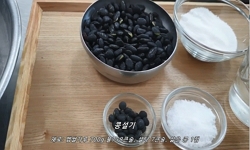Two rice cultivars of the japonica type, ozone-resistant Ilpumbyeo (IL) and ozone-susceptible Keu-mobyeo#l (KM) were exposed to ozone (O3 ) at 0.15 ppm for 30 days. The available nutrient regimes were varied by doubling the supply of nitrogen (N), pho...
http://chineseinput.net/에서 pinyin(병음)방식으로 중국어를 변환할 수 있습니다.
변환된 중국어를 복사하여 사용하시면 됩니다.
- 中文 을 입력하시려면 zhongwen을 입력하시고 space를누르시면됩니다.
- 北京 을 입력하시려면 beijing을 입력하시고 space를 누르시면 됩니다.

Growth and Yield Responses of Two Rice Cultivars to Ozone Treatment under Different Nutrient Supply
한글로보기https://www.riss.kr/link?id=A100188413
-
저자
Cho Jeong Hwan (Department of Agronomy,Kyungpook National University) ; Shin Young Park ; Tae Kwon Son ; Sang Chul Lee
- 발행기관
- 학술지명
- 권호사항
-
발행연도
2001
-
작성언어
Korean
- 주제어
-
KDC
524.2
-
등재정보
KCI등재
-
자료형태
학술저널
- 발행기관 URL
-
수록면
78-83(6쪽)
- 제공처
- 소장기관
-
0
상세조회 -
0
다운로드
부가정보
다국어 초록 (Multilingual Abstract)
Two rice cultivars of the japonica type, ozone-resistant Ilpumbyeo (IL) and ozone-susceptible Keu-mobyeo#l (KM) were exposed to ozone (O3 ) at 0.15 ppm for 30 days. The available nutrient regimes were varied by doubling the supply of nitrogen (N), phosphorus (P) and potassium (K) within a basic fertilizer status (N, P, K; 15, 12, 12 kg l0a-1 ). There was little difference on plant height between ozone-treated and nontreated plants. The most significant ozone stress on tiller number was shown on the 30th day of ozone exposure. Slight recovery from ozone stress was noted on the 60th day. On the 30th day, tiller number was greatly decreased by 40.8% in IL and 64.6% in KM, whereas at a high nitrogen supply regime (2N), it was decreased by 21.4% in IL and 42.7% in KM as compared to the control not treated with ozone at basic fertilizer status. The inhibition of tiller production caused by ozone exposure was alleviated on the 60th day. In both cultivars, number of spikelets per plant and weight of 100 grains were affected little by the ozone treatment irrespective of nutrient regime. However, the number of panicles per plant and yield were reduced significantly. In both cultivars, yield of ozone-treated plants with 2N status was 12.4-16.1 % higher than that of the ozone-treated plants with basic nutrient status. A significant yield decrease of 47.8% and 33.4% was observed for IL and KM, respectively, in ozone-treated plants with higher potassium (2K) status.
동일학술지(권/호) 다른 논문
-
Growth Characters and Sugar Content During Grain Filling in New Hybrid, Chalok 1/Cooktail 51 Corn
- 韓國作物學會
- Kim Ik Hwi
- 2001
- KCI등재
-
Comparison of Nitrogen Application Methods at the 4th Leaf Stage in Direct-Seeded Rice Field
- 韓國作物學會
- Nam Jin Chung
- 2001
- KCI등재
-
Quantitative Growth Analysis of White and Reddish Sword Bean
- 韓國作物學會
- Hong Soo Doo
- 2001
- KCI등재
-
Effect of Planting Date and Plant Density on Yield and Quality of Soybean Forage in Jeju
- 韓國作物學會
- Young Kil Kang
- 2001
- KCI등재




 ScienceON
ScienceON 코리아스칼라
코리아스칼라







